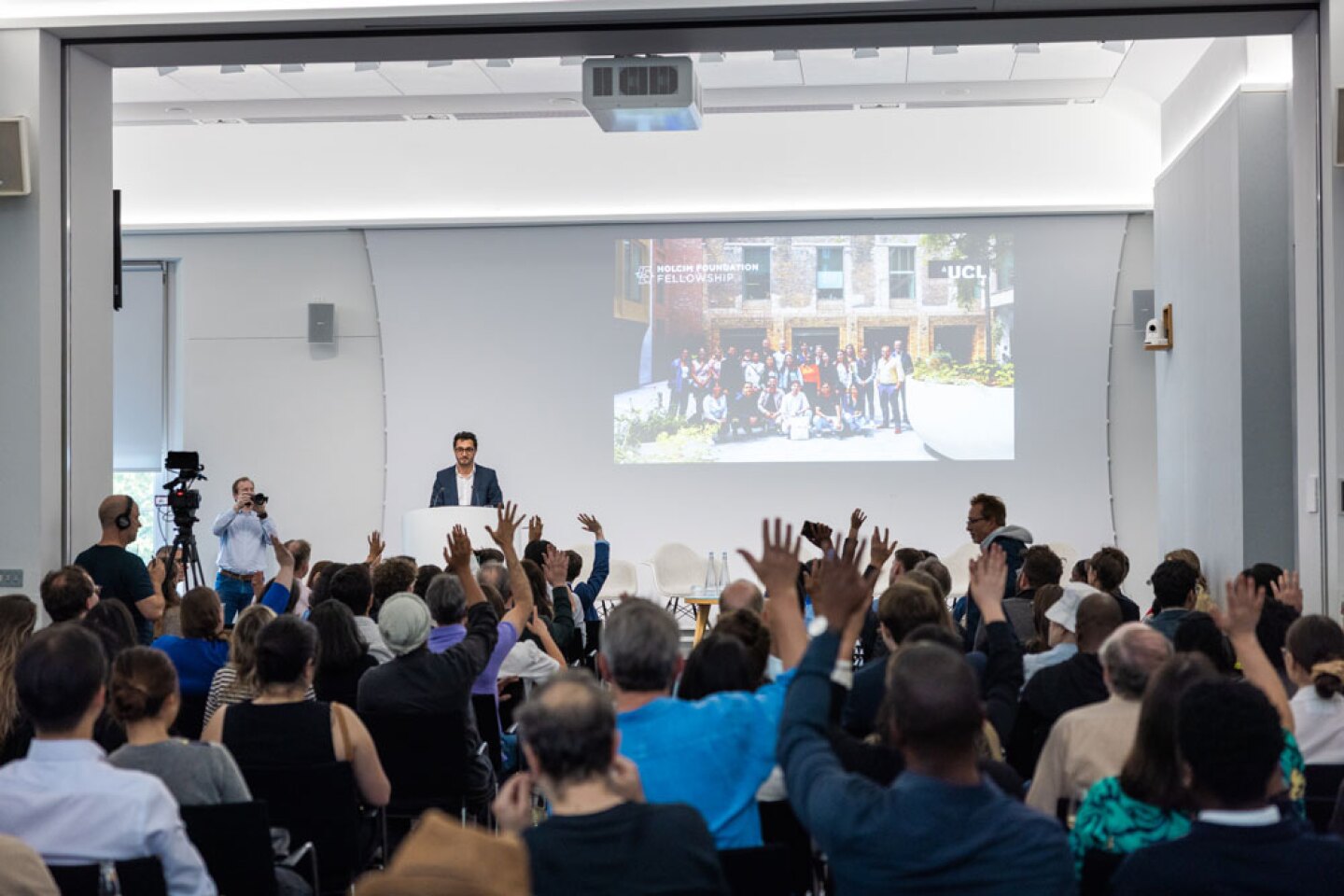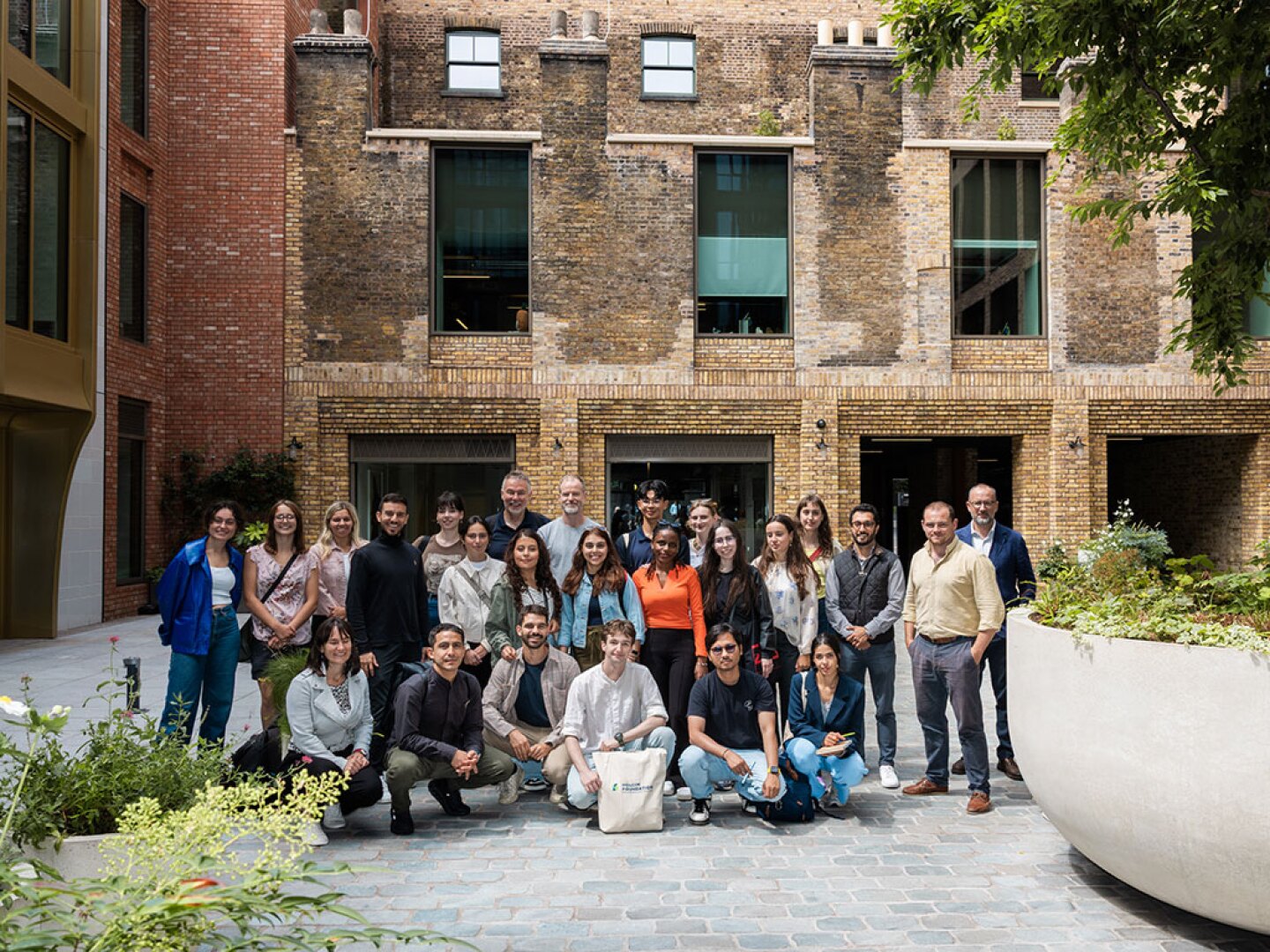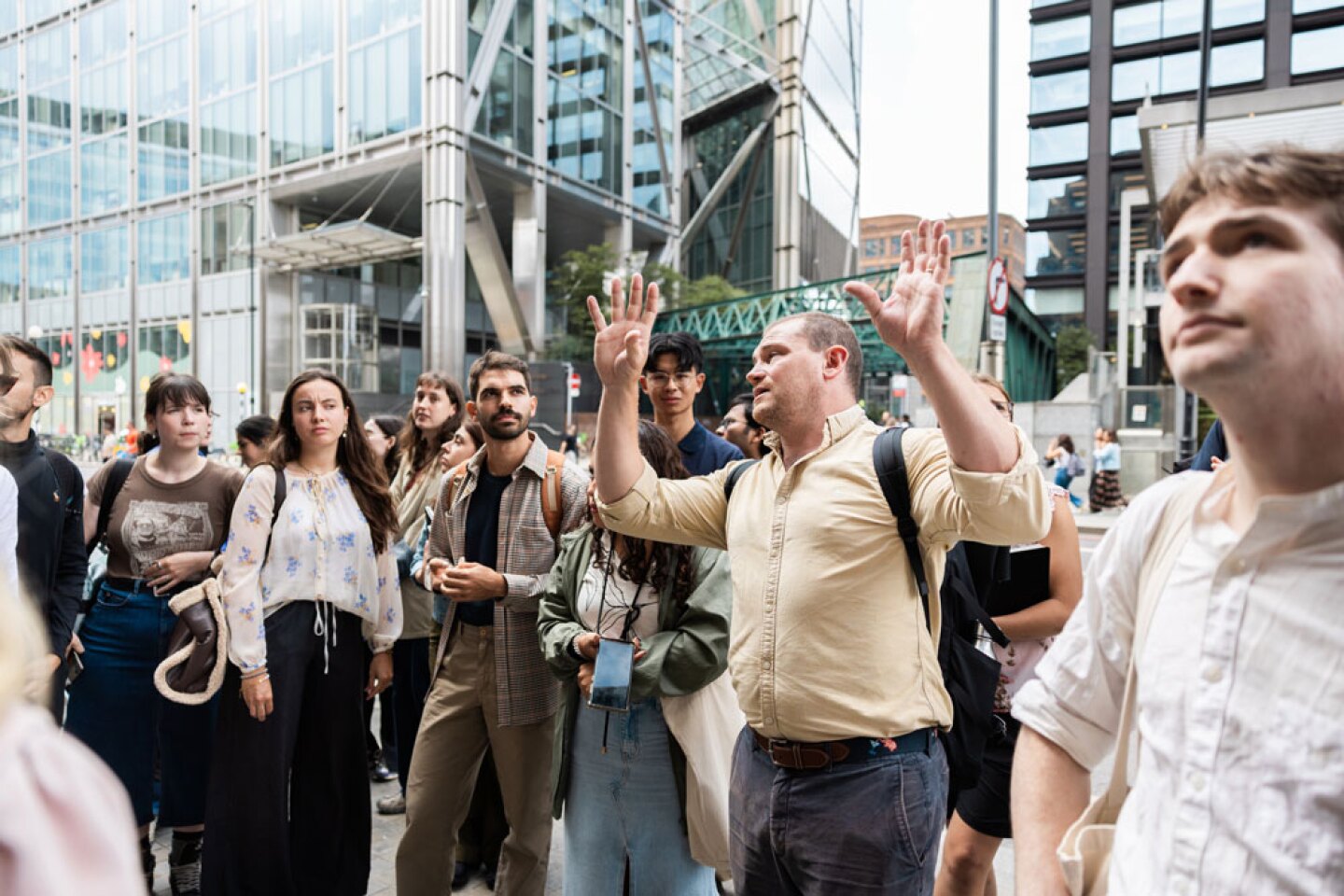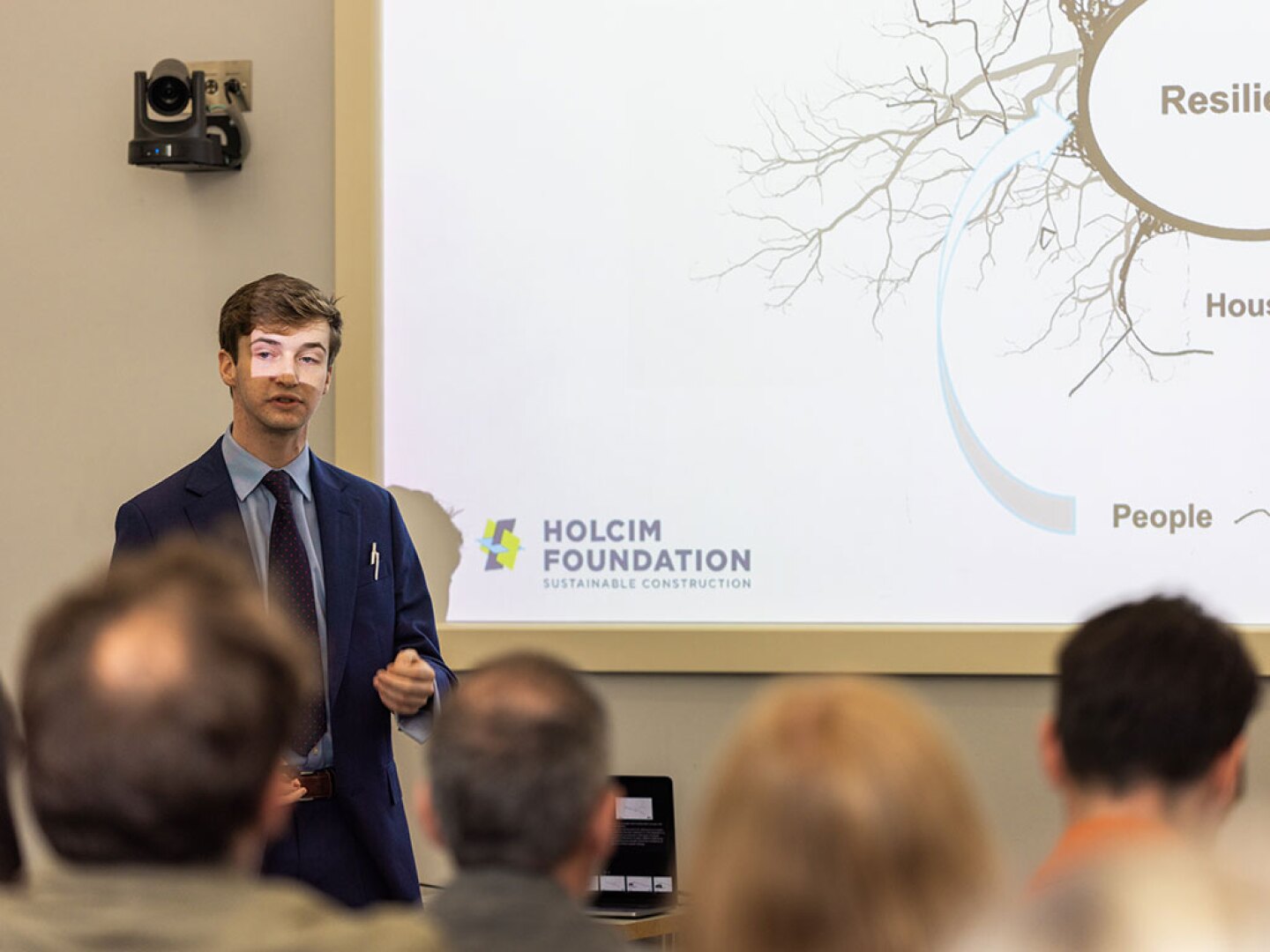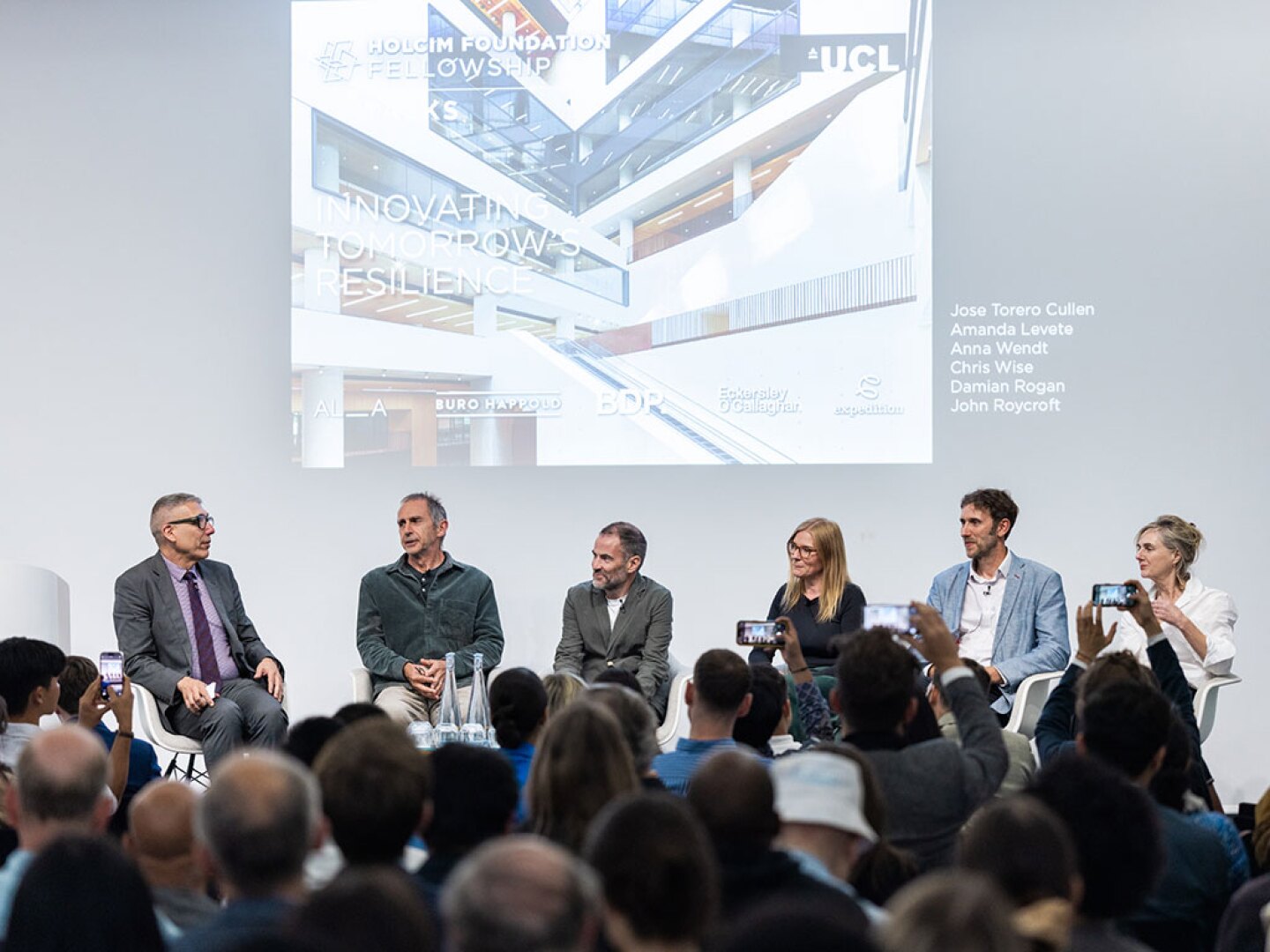When we gathered in a filled hall at the Royal Academy of Engineering for the final panel of the Holcim Foundation Fellowship at UCL in London, I opened with a question: “How many of you feel optimistic about the future of our cities?”
Almost every hand went up.
That optimism—measured but sincere—reflected the energy and urgency that shaped our two-week program, hosted by UCL’s Department of Civil, Environmental & Geomatic Engineering and led by José Torero, Matthew Heywood, and Michael Woodrow. Together with a cohort of early-career professionals, we set out to test the limits of The London Plan and imagine what could lie ahead through a fellowship themed “Innovating Tomorrow’s Resilience.”
We asked fellows to surface the invisible systems, omissions, and contradictions that shape London’s spatial politics, and to respond with a clear, unapologetic point of view. They did so in a London manifesto, which they titled What If?
A city already in progress
The questions we started with were simple: Does London need another plan? If so, what’s missing? If not, how can its delivery align with the city’s needs?
Throughout the two weeks, participants encountered the city from above, below, and within—via behind-the-scenes site visits, project discussions, and frank conversations that exposed the tension between needs, ambition, and delivery of real estate developments.
We explored new builds and adaptive reuses, walked the historic core of the city, traced the Thames corridor, visited the Houses of Parliament and Queen Elizabeth Olympic Park to engage with projects that reveal the city’s overlapping goals, constraints, and unrealized potential.
Site visits with RSHP, Buro Happold, BDP, Expedition Engineering, AL_A, Eckersley O’Callaghan, and Publica offered hands-on learning—through both successes and cautionary tales—with guest input from AKT II and the Greater London Authority.
Across these encounters, one theme kept resurfacing: The real challenge of resilience is not one of technical competence—but of trust, language, and long-term thinking. It is about social, political, and economic conditions and priorities that must be negotiated in public, under pressure, and across time.
Resilience with intent
Participants challenged the ideas of resilience as a final state and planning as an authoritative act. They proposed frameworks that foregrounded belonging, safety, and equity. They asked what kind of metrics a city should use to measure success and to make visible what is often overlooked.
In their What If? Manifesto for London, the fellows identified four critical areas of intervention.
- Process over product: The London Plan should evolve from a static document into an adaptive manual—one that enables experimentation, iteration, and learning over time. Planning should be responsive, not prescriptive.
- Public realm as core infrastructure: Green and blue infrastructure must be treated as essential, not decorative. Fellows proposed interventions along the Thames, repositioning it as a spine for ecological restoration, urban resilience, and inclusive access.
- Radical reuse as first principle: “Start with what’s already here.” Adaptive reuse should be the default condition for London’s future—for buildings, systems, networks, and evolving policies.
- Metrics that matter: Although financial viability and floor area ratios are essential, fellows argued for planning indicators rooted in well-being—joy, care, trust, human dignity, and social connection.
Fellows demonstrated that resilience isn’t something to be mapped or measured in isolation. It must be built into how we make decisions, how we work across disciplines, and how we define success. Their Manifesto for London is clear-eyed, challenging, and unapologetic—and it sets a distinct direction.
A practice across cities
This fellowship is part of a wider arc—an ongoing conversation unfolding across cities, each exposing different dimensions of how the built environment is shaped, governed, and transformed.
In New York City, the focus was on decarbonization at scale, highlighting how infrastructure, finance, and regulation can be mobilized to drive climate action in a complex, market-driven environment.
In Mexico City, we explored land, legacy, and informality—where communities are actively shaping access to housing and infrastructure through ingenuity, negotiation, and bottom-up adaptation.
In London, the focus turned to planning culture—revealing how one of the world’s most advanced frameworks can evolve to better address questions of equity, trust, and long-term resilience.
Although rooted in London’s context, the fellowship raised questions that resonate far beyond:
- What makes a plan resilient to social, political, and environmental shocks?
- How do we define value beyond property price and land use?
- Can we rethink and better harness the power of diversity in global cities?
In a world of converging crises, the need for imagination, consensus, and coordinated action is urgent. And that, perhaps, is what resilience really looks like. At the same time, a shared pattern is emerging, one that reframes sustainability not only in terms of outcomes but also as a way of practicing—across disciplines, across institutions, and across systems.
Next up: Brussels, where we turn our attention to the design of incentives and governance—exploring how regulatory environments, financial instruments, and institutional cultures can be aligned to drive meaningful change. As each city reveals new questions, a broader practice is beginning to take shape—one that is grounded in curiosity, collaboration, and the courage to ask what else is possible.

